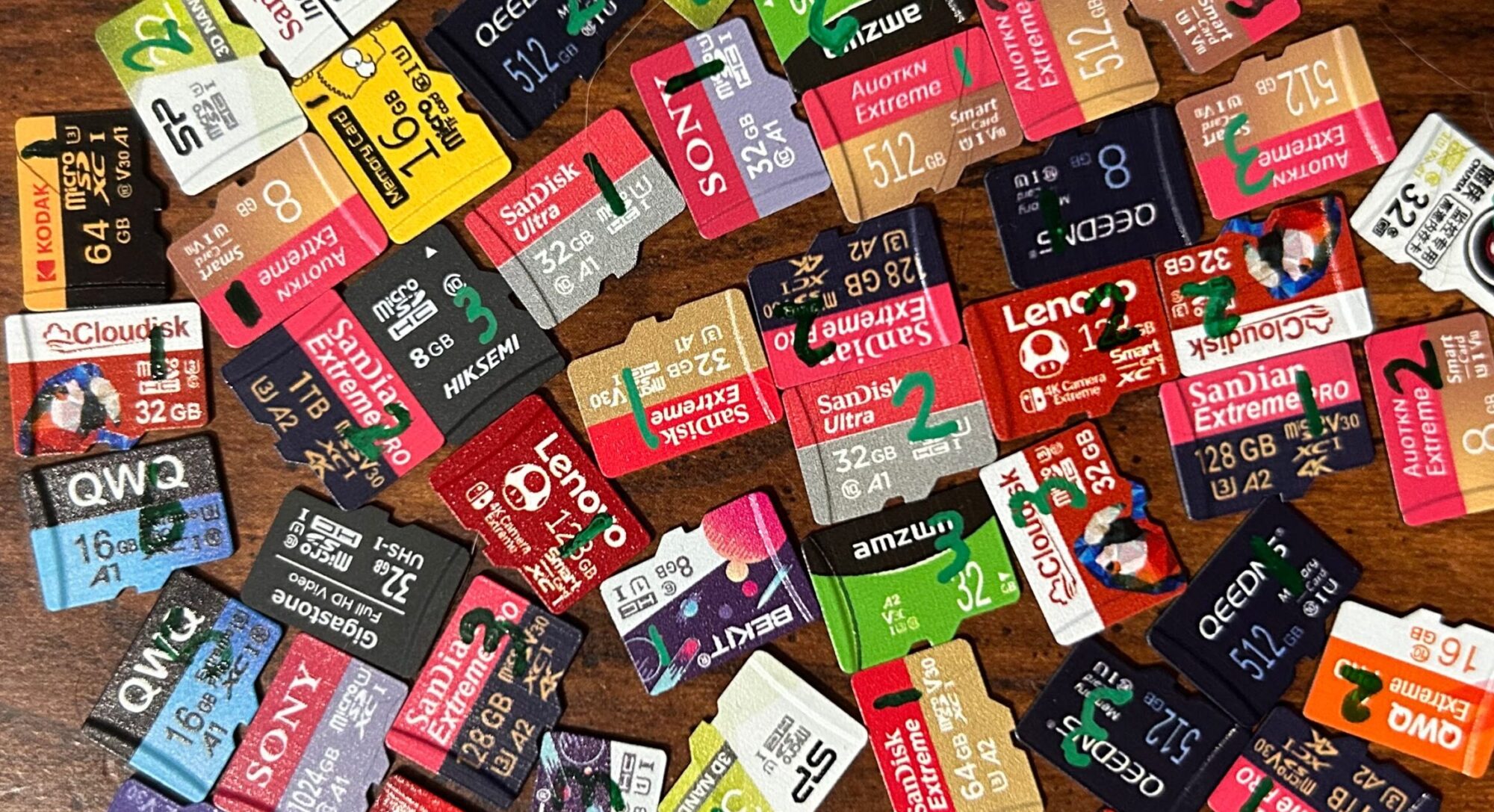Samsung is a pretty well known name in the electronics industry, and flash memory is no exception — they’re one of the few companies that owns and operates their own silicon foundries.
I purchased this model because I wanted to have a few legitimately obtained, name brand cards in my collection to compare the AliExpress samples to.
One thing of consequence that I’ll note: of the brands I’ve evaluated so far, Samsung is the name brand whose flash was neither fake nor skimpy. It seems that if you buy a 32GB Samsung card, you get at least 32GB of space. Many of the other name brands — including Kingston, Kioxia, Lexar, and SanDisk — provided cards that were all skimpy, so I was pleasantly surprised to see that Samsung’s cards were not.
Performance-wise, I was actually a bit disappointed. Sequential read speeds were slightly above average (scoring in the 64th to 74th percentiles), but all of the other scores were just…average. For such a well-recognized brand, I would have expected better.
These cards bear only the U1 mark. (The Class 10 mark appears on the package, but it does not appear on the cards themselves.) All performance measurements were good enough to qualify for both the U1 and Class 10 marks. I will note, however, that Samsung seems to be phasing out this particular version of the EVO Plus. The new version (see the Samsung EVO Plus 64GB) seems to have a more simplistic design (in terms of both the packaging and the card artwork) and sports faster speeds.
On the endurance testing front:
- Sample #1 has survived 17,243 read/write cycles and has not yet experienced any errors.
- Sample #2 has survived 13,910 read/write cycles and has not yet experienced any errors.
- Sample #3’s first error was a four-sector wide address decoding error during round 1,416; it has survived 11,644 read/write cycles in total so far.
My conclusion: this not a bad card at all. In terms of performance, it’s about average — and about on par with the WD Purple 32GB. However, it has fared pretty well in endurance tests — so maybe Samsung made a tradeoff, sacrificing performance for endurance. The only problem? As I said above, Samsung seems to be phasing these cards out, so they might get harder to find as time goes on.
June 21, 2025 (current number of read/write cycles is updated automatically every hour)

